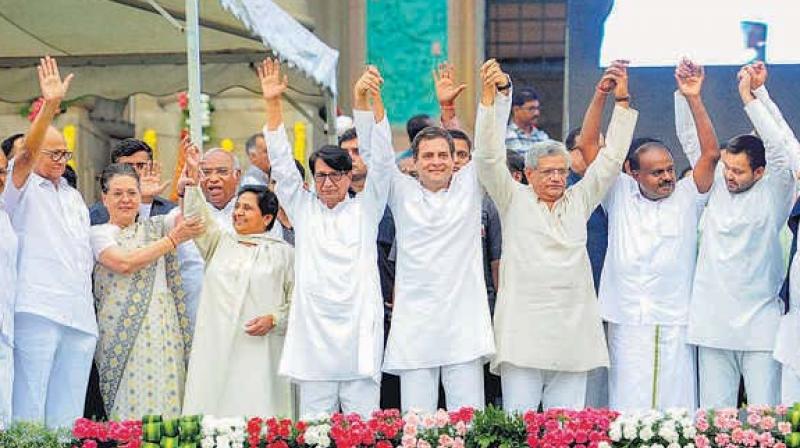They did survive a 100 days after all
A post election coalition always has innumerable challenges to face.

As the Kumaraswamy led coalition government in Karnataka completes 100 days in office, many would assert that the fact that it has remained in power is by itself an achievement!
Given the daily pin-pricks that this coalition has been subjected to largely on account of its own internal contradictions, the focus clearly was on keeping the coalition somehow going with very little time and energy being devoted to the nitty-gritty of governance.
A post election coalition always has innumerable challenges to face. The desire to keep the BJP out of power, that brought this coalition together, has largely survived on this 'negative glue. Further, the Karnataka experiment was also seen as a forerunner to the formation of a national anti-BJP coalition. Thus the success, or even survival of this coalition government, needs to be seen from the perspective of its wider implications on national politics. The galaxy of national leaders who had gathered at Bengaluru, to celebrate the formation of this coalition government was itself an indication of how critical this experiment was.
Any coalition requires a ‘common agenda’ that becomes the basis of governance and policies. One is not sure as to what elements constitute this ‘common agenda’ of the Congress-JDS coalition, save keeping the BJP out of power. One had hoped that the Coordination Committee of the coalition would meet more frequently and play a more decisive role in steering the policy priorities of the government. While the budget presented by the Chief Minister was one indication of the policy thrust of this government, the focus was clearly on the waiver of loans for farmers, a key electoral promise made by the JD(S). One was looking forward to an element of continuity in terms of policy priorities of the coalition, given that the coalition partner of the JD(S) was the one which ran the previous government. This was clearly not evident in the budget document.
In more ways than one, the Council of Ministers seems to be split down the centre, with the Congress and JD(S) Ministers clearly having a different set of priorities and speaking in different voices. The fact that some ministers in the coalition government have consciously sought to retract on some of the decisions of the previous government (the Higher Education Minister revoking some of the nominations by the previous government to Universities bodies, in spite of the specific statement of the former chief minister to avoid any such move is a case in point) are visible indicators of the coalition partners pulling in different directions. The statement of the chief minister on North Karnataka and the immediate public reaction to the same and the damage control attempted later is yet another example of the inconsistencies and ambiguity that plague this coalition. What has hurt the image of the coalition the most, is the ceaseless ‘statement war’ between leaders of the two parties.
While the JD(S) found itself in the driver’s seat, on account of the play of circumstances, and thus hopes to make the best of the situation, the Congress has been unable to use these 100 days to get its act together. The party appears to be in a stage of drift without a clear direction or effective leadership. This is visible in the way it is contributing to the coalition government as well as in its preparation for next year’s election. While the coalition has survived the first 100 days, the journey ahead seems to be the bigger challenge. Running a post-election coalition is not about a 50 meter dash but a 5 km marathon!
The writer is Pro-Vice Chancellor of Jain University and a political analyst

